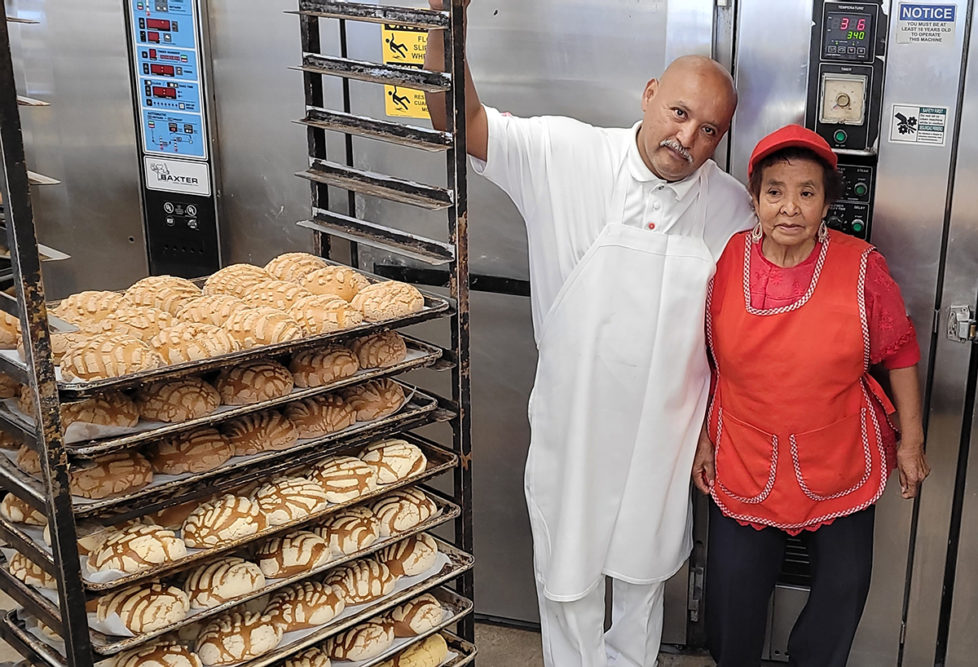Small businesses such as retail bakeries are the lifeblood of the economy. Fortunately, help is on the way.
The U.S. Small Business Administration has finalized two rules to address persistent gaps in access to capital impacting small business owners in underserved communities as part of the Biden-Harris Administration’s effort to grow the economy from the middle out and bottom-up, not top-down. The final rules grant permanence to SBA’s program for nonprofit mission lenders, remove outdated limits on non-depository lender participation, increase opportunities for employee ownership, and modernize the credit criteria and underwriting standards to further incentivize a wider distribution network and small-dollar loans.
Small businesses are the engine of the economy. That’s why, since day one, President Biden’s Investing in America agenda has laid the groundwork and paved the way for historic economic progress – over 12 million jobs created and a small business boom of 10.5 million new business applications. At the same time, decades-long challenges for small business owners, particularly those in underserved communities, persist. In 2022, two out of three business owners who sought credit did not receive what they needed. The number of lenders that originated SBA’s 7(a) loans under $50,000 and $150,000 decreased by over 40% and 25%, respectively, for the past five to seven years.
“Modernizing and expanding SBA’s lending programs will open new opportunities to our highly entrepreneurial, yet underserved communities that have far too long been denied access to the funding they need to create jobs and grow our economy,” said U.S. Small Business Administrator Isabella Casillas Guzman. “Equity has been a top priority of the Biden-Harris Administration since day one as our economy needs all of our great ideas and talented entrepreneurs. These rule changes demonstrate that commitment by providing government-guaranteed lenders with all the tools they need to close the gaps that still exist for small businesses who need capital.”
President Biden’s economic agenda has focused on helping small businesses start up and grow. To seize these opportunities, entrepreneurs need capital options that enable them to start and scale businesses; yet too many entrepreneurs cannot obtain affordable loans, including rural small businesses affected by over 1,600 banking deserts in America, minority-owned businesses that are persistently less likely to receive credit, and very small businesses seeking small-dollar loans. SBA’s final rules, when enacted, will help these new entrepreneurs grow their businesses by:
Addressing capital access market gaps in underserved communities: SBA is modernizing the lending criteria and conditions for SBA’s business loan programs and reducing red tape for SBA lenders, which will expand the number of credit-worthy business owners who can access SBA loans, particularly among underserved communities like women, minority, veteran, and rural entrepreneurs. SBA is doing this by updating lending criteria for its 7(a) and 504 loan programs, including by:
- Allowing lenders to make SBA loan decisions based on their existing credit policies for similarly-sized non-SBA loans;
- Providing additional flexibility for loans under $150,000 to reduce the cost and complexity of small-dollar lending;
- Streamlining paperwork required of lenders, enabling them to spend more time with applicants and make loans more efficiently;
- Simplifying and clarifying affiliation standards to ease the burden on small business owners and lenders, and make clear who qualifies for an SBA loan.
SBA will expand the number of lenders who can offer SBA-guaranteed loans, providing small businesses with more options for meeting their capital needs. The rule will expand the number of Small Business Lending Company (SBLC) licenses, which promote responsible small business lending through non-depository lenders backed by SBA loan guarantees and have been a part of SBA lending for decades. The number of SBLC licenses has been capped at 14 for 40 years, limiting potential lending options for small businesses.
SBA will also address capital access gaps by granting permanence to SBA’s program for nonprofit, mission-oriented lenders by creating a new Community Advantage SBLC license. Community Advantage lenders have lacked long-term certainty about their participation in SBA programs due to the pilot status of the program. Even with these limitations, the Community Advantage Pilot Program has demonstrated success with higher rates of lending to Black, Hispanic, women, and veteran-owned businesses.
SBA’s rule will:
Lift the moratorium on new regular SBLCs and allow for additional licensees, enabling them to make loans to small-dollar borrowers with government guarantees, reducing risks and broadening opportunities;
Provide certainty through permanence of Community Advantage, encouraging current and new nonprofit lenders to invest in and expand SBA lending operations;
Utilize modern technology to make lender oversight and borrower protection stronger and less resource-intensive than was possible when the SBLC moratorium was put in place.
These rules build upon a previous announcement on the Community Advantage Pilot Program that increased the maximum loan size from $250,000 to $350,000, lifted the four-year lender moratorium, enabled the SBA to expand the lender network, and allowed lenders to offer lines of credit, interest-only periods, and other loan modifications that meet the needs of small business borrowers.
A reference to this rule is available in the Federal Register at the following link: Affiliation and Lending Criteria for the SBA Business Loan Programs here.





